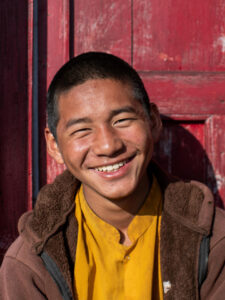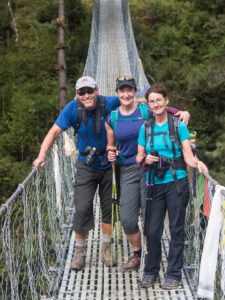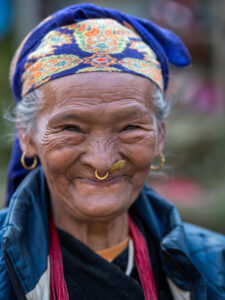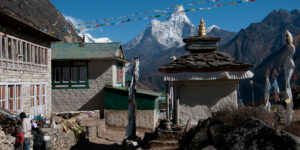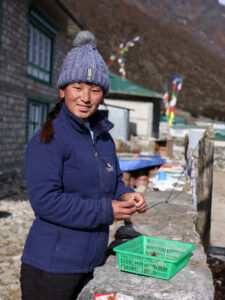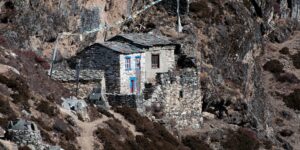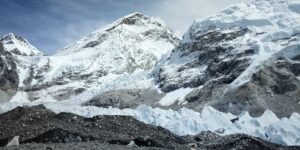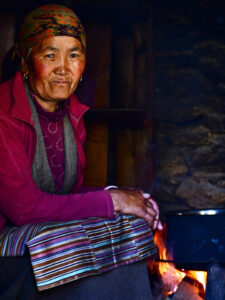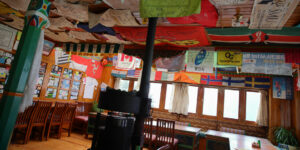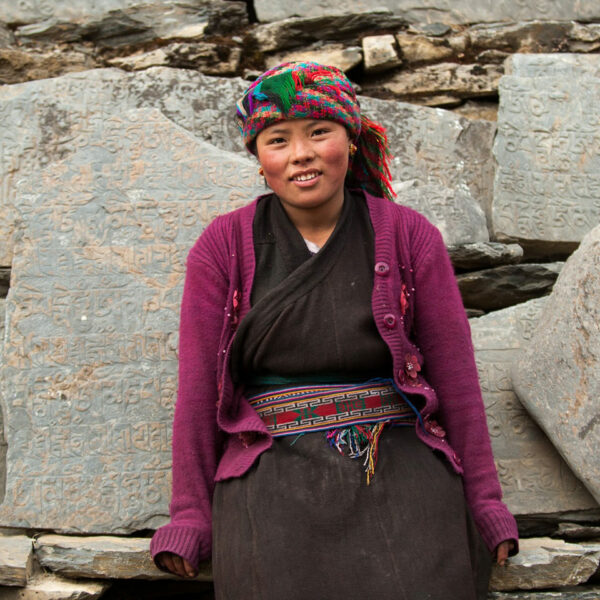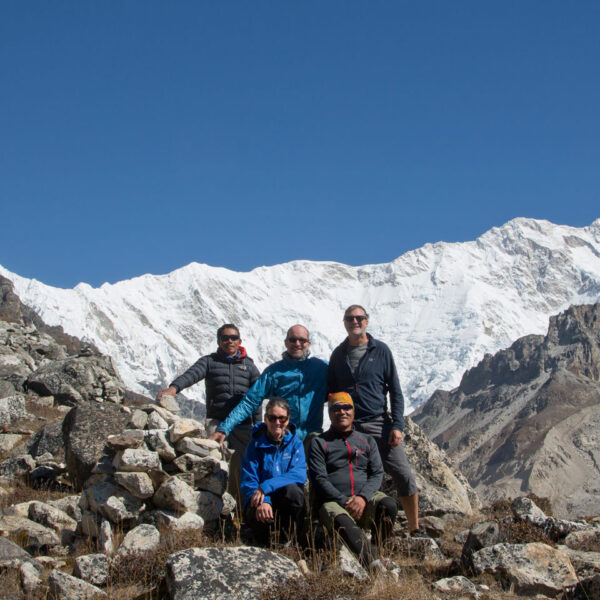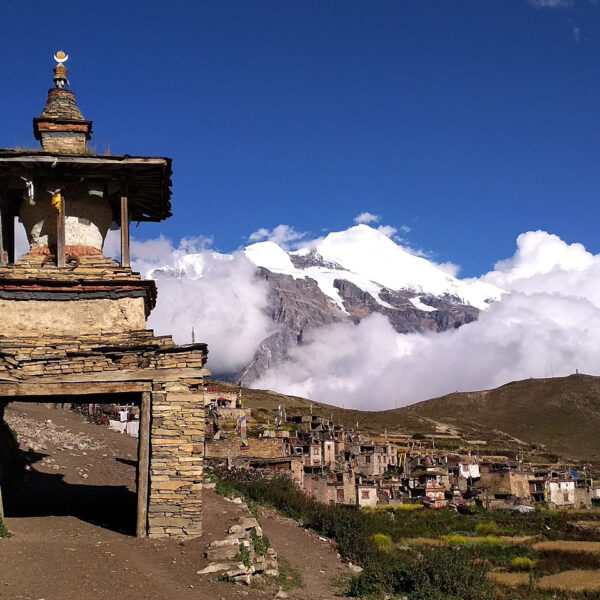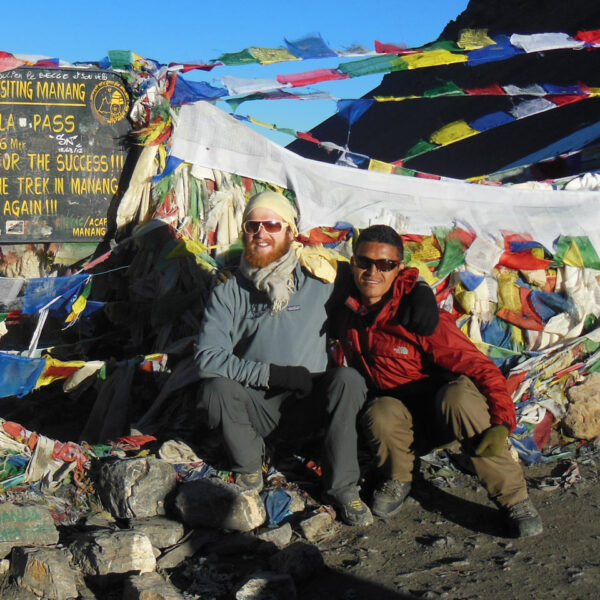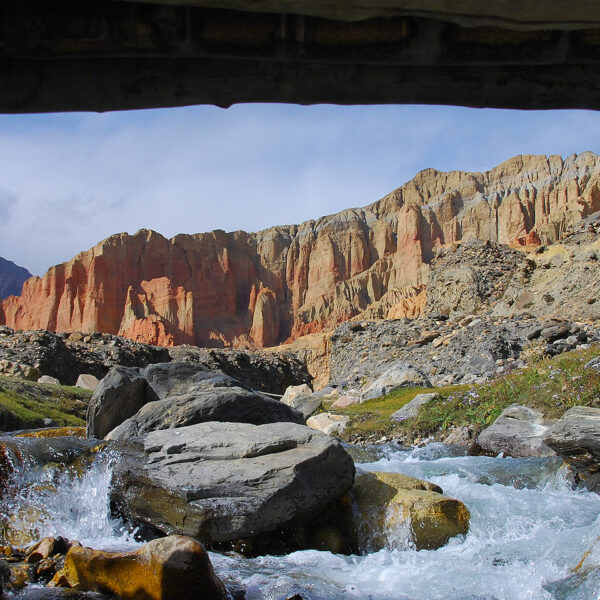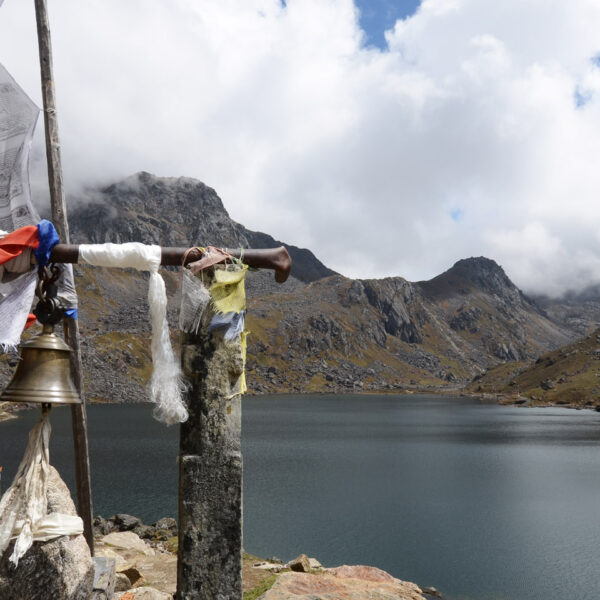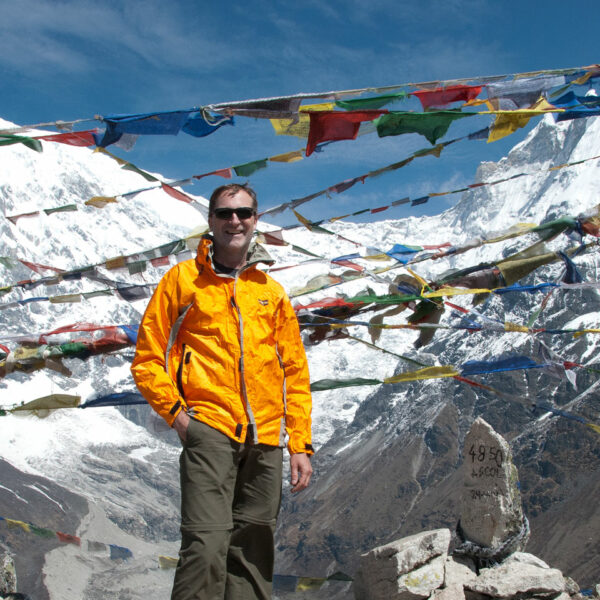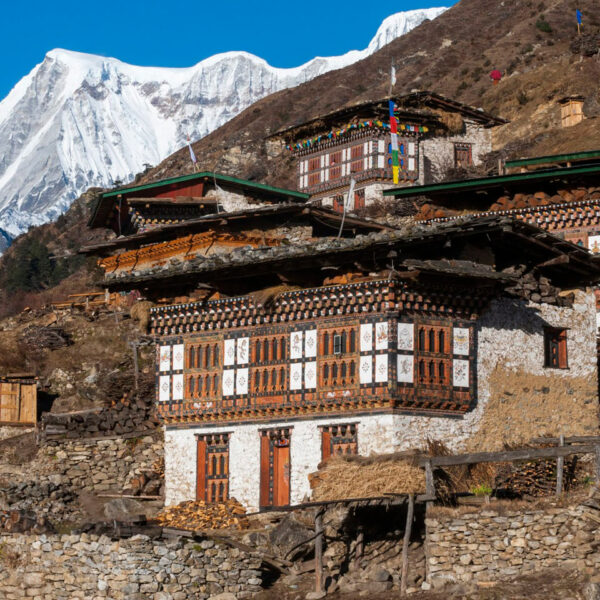
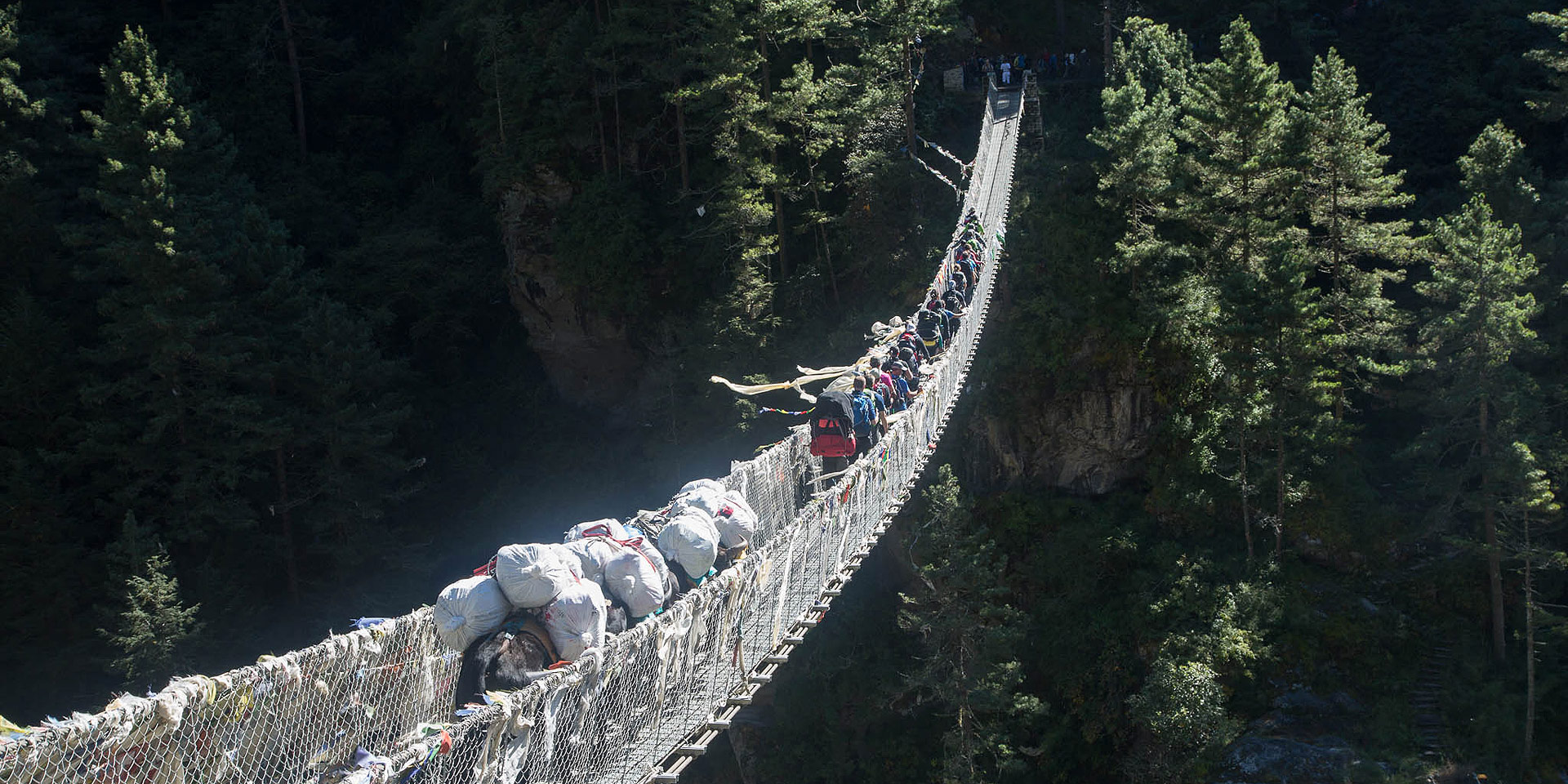
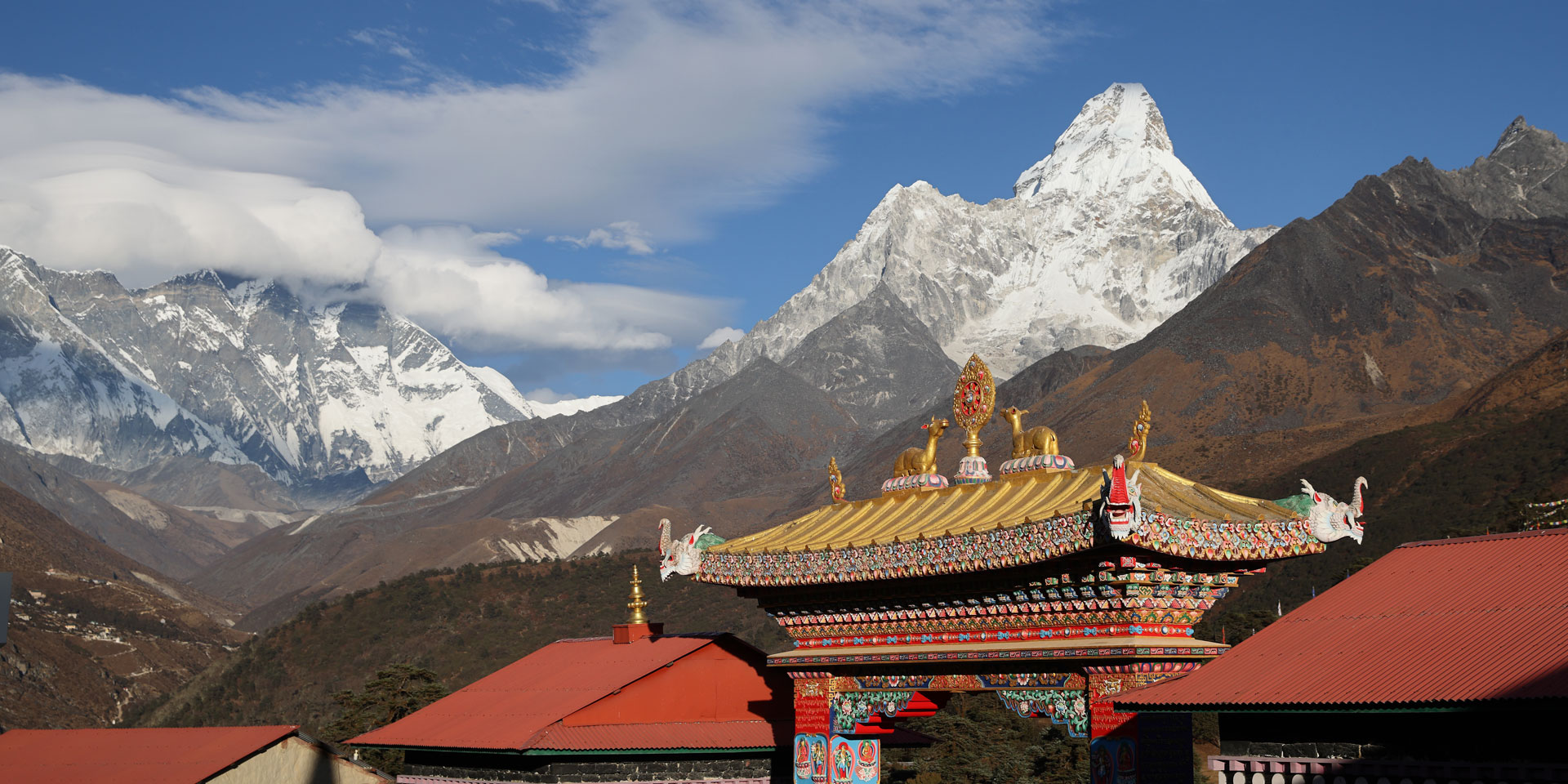
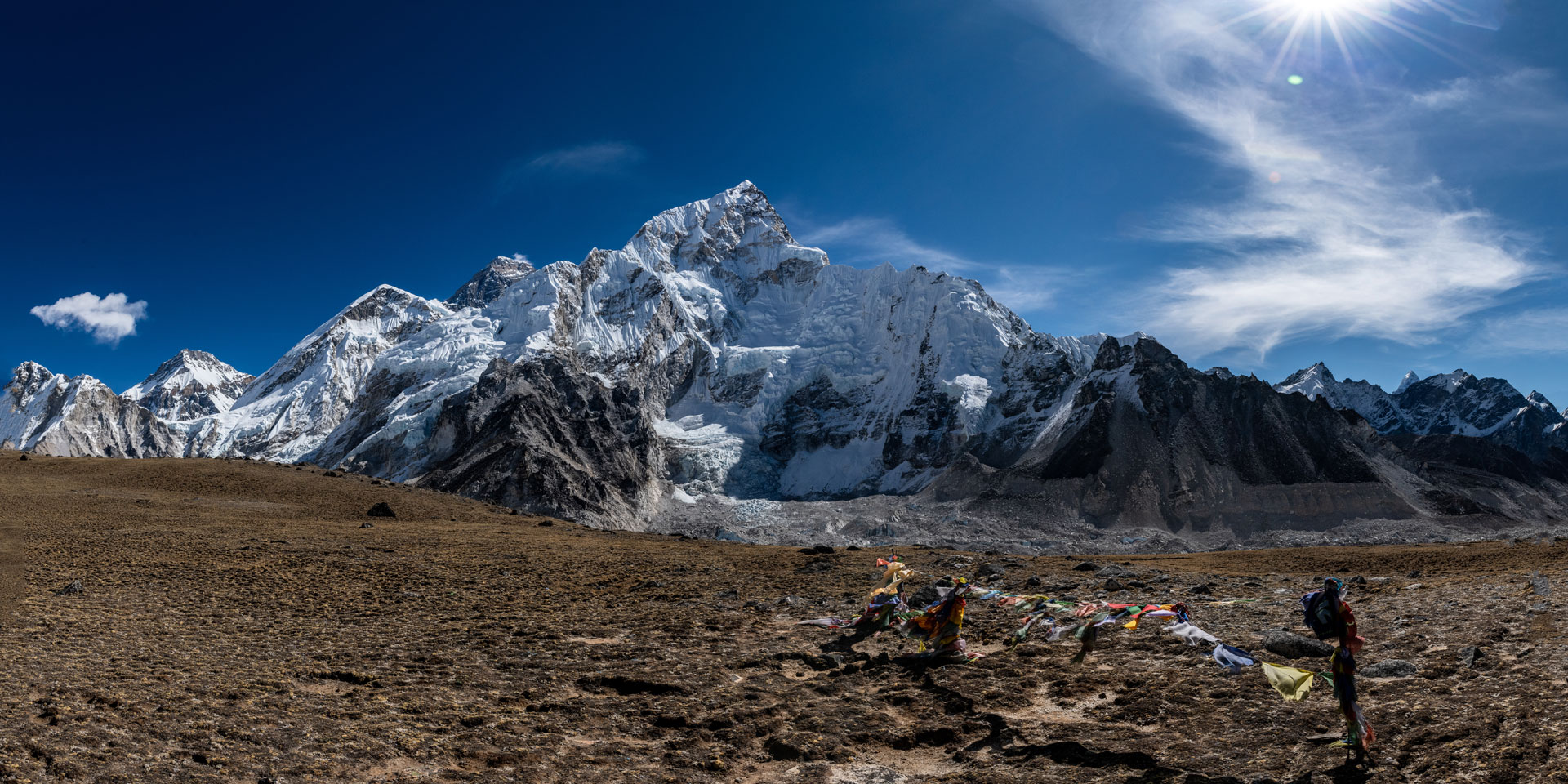
Solu and Khumbu – The Best of Everest
This wonderful rek in the lower and upper Everest regions, Solu & Khumbu, is designed to let you experience not only traditional Sherpa culture, get up close with Tibetan Buddhism but also get you right up into the high mountains. The area offers magnificent views of Mount Everest and lots of other stunning mountains.
This trek gives you the opportunity to climb Kala Pattar, a 5554 metre peak on the way to the Everest B.C, which is the superb vantage point for magnificent views of southwest face of Mt Everest and surrounding Himalayan mountains. Your trail along the Khumbu Glacier takes you to the foot of the Everest where you have an amazing perspective on the Khumbu Ice Fall.
This trek requires you to be moderately fit but not necessarily a highly experienced trekker. Sometimes the fittest people come down with altitude sickness problems from going up too fast, so we make sure we take our time and pace our ascent!
- Starts In: Kathmandu
- Ends In: Kathmandu
- Duration: 21 Days
- Difficulty Grade: Strenuous
Highlights
- Start your trek off the beaten path before joining the Everest Base Camp main trail
- Trek into the views from panoramic Pikey Peak, head directly for the Himalaya
- The big views: from the Khumbu Glacier to the highest mountain in the world, mighty Mt Everest
- Sherpa culture, mountain monasteries and plenty of tasty Sherpa stew
Itinerary
Day 01: Fly from Kathmandu to Phaplu, Trek from Phaplu to Junbesi [2675m]
Today we have an early morning start from our hotel to get to the airport for our short flight to the mountains of the Everest Region. As we fly into the airport at the little village of Phaplu we can see the classic style of the sturdy Sherpa houses, giving us a taste of the days ahead. After landing and meeting the rest of our trekking crew, we hit the trails on our way north. We are headed to the charming town of Junbesi, located in a lovely green valley on the main Jiri to Everest trekking and trade route. We set out following the course of the river which will be our guide for most of the day as we trek through small villages, terraced fields, and lush forest. Junbesi is a large village for this area and it is home to one of the famous ‘Hillary schools’ and a hydropower plant. The large monastery, built-in 1635, is claimed to be the oldest monastery in the Solukhumbu region (although a few other monasteries lay claim to title this as well).
Walking time: Approx. 5 hours
Accommodation: Tea House
Meals included:
Lunch, Dinner
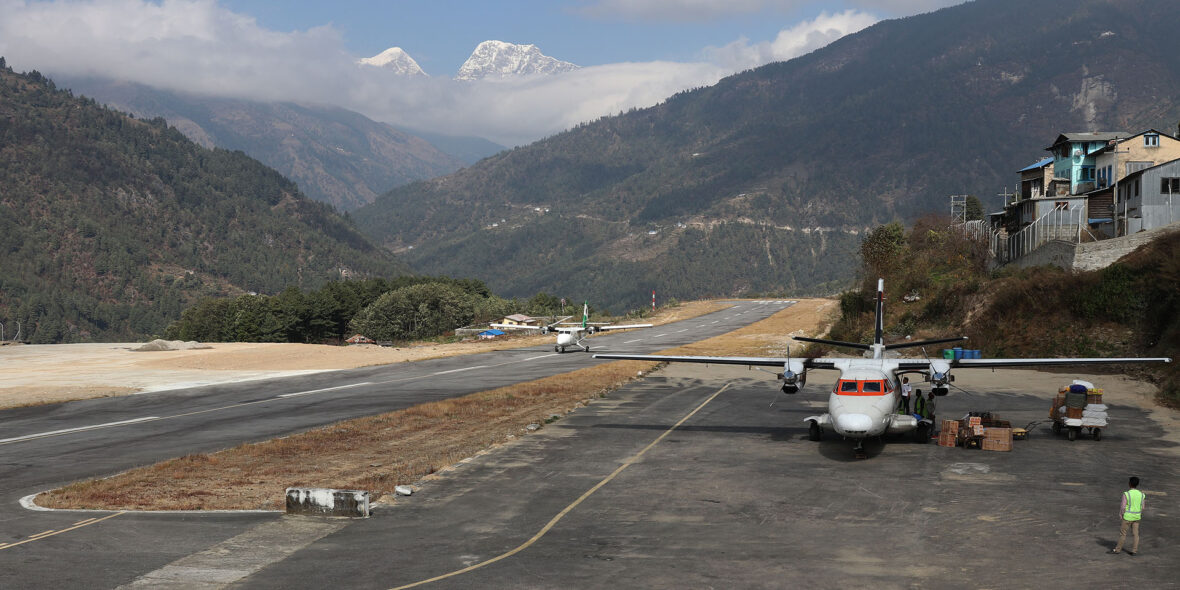
Day 02: Visit Thubten Choling Monastery
Today we head up the lovely valley northwards to Thubten Choling, one of the largest Tibetan resettlements in Nepal. The large monastery here was established by the highly esteemed Trulsik Rinpoche, who fled from the Rongbuk Monastery in Tibet in the 1950s. As one of the few remaining high lamas who was born and educated in Tibet, Trulsik Rinpoche is of immense importance to Buddhism, in particular, the Nyingma sect to which he and the Thuptencholing Monastery belong.
The monastery was built in the 1960s as a ‘temporary’ monastery until the Rinpoche could return to Tibet, however it has now been reconstructed as the permanent home of this Nyingma legacy and the Rinpoche’s reincarnate will be on this site, not in Tibet. In addition to the monastery, there is a Tibetan Medical school and hospital, so this is a great chance to learn about this ancient healing art.
In the afternoon we will return to Junbesi for a hearty dinner in our cozy tea house.
Walking time: Approx. 3-4 hours
Accommodation: Tea House
Meals included:
Breakfast, Lunch, Dinner
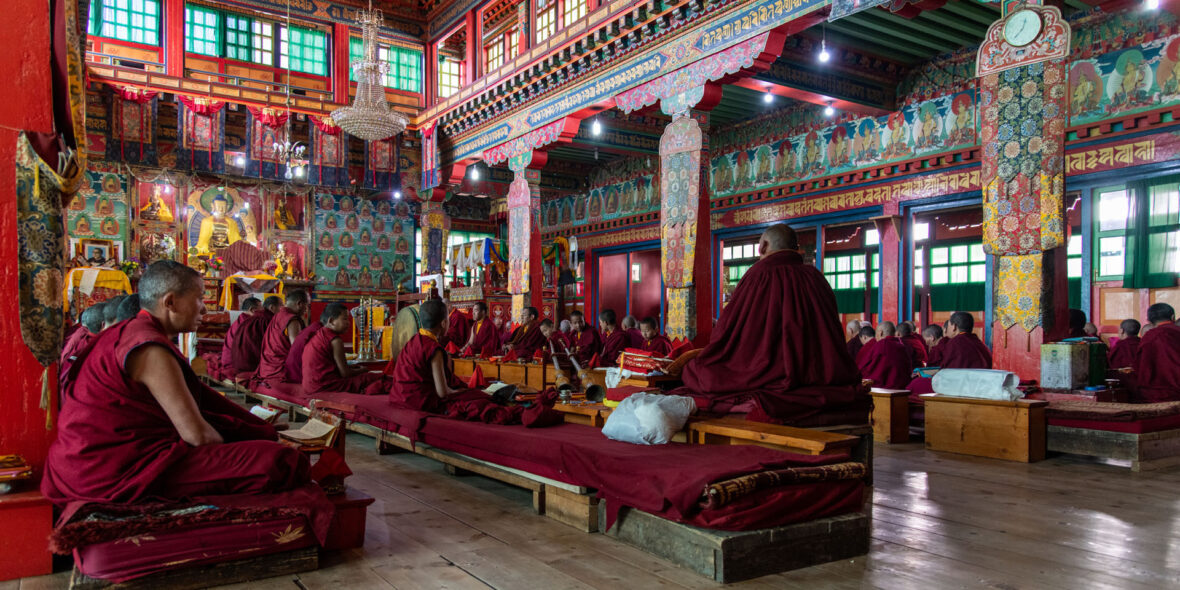
Day 03: Trek from Junbesi to Taksindu [2960m], Views of Mt. Everest
This morning we bid farewell to Junbesi and hit the trails again, bound for Taksindu. We cross the river at the ‘bottom’ of town and climb through forest up to Salung from where we get views of Mount Everest (8848m), Chamlang (7319m) and Makalu (8481m), weather permitting.
From here we also have gorgeous views out across the valley to Chiwong Monastery and on down towards Phaplu. We continue on the trails, contouring and then dropping down to a stream before a short climb up into Ringmo, famous for its apple orchards and interesting apple products such as apple rakshi (alcohol), cider, and apple pie.
From here we have a final short climb to Taksindu La, from where we again have great mountain views and then a short descend to the Taksindu Monastery and our lodge. The Taksindu Monastery was built in 1946 by the Tengboche Lama and is usually open early morning or late afternoon, please make sure to leave a donation if you visit.
Walking time: Approx. 5-6 hours
Accommodation: Tea House
Meals included:
Breakfast, Lunch, Dinner
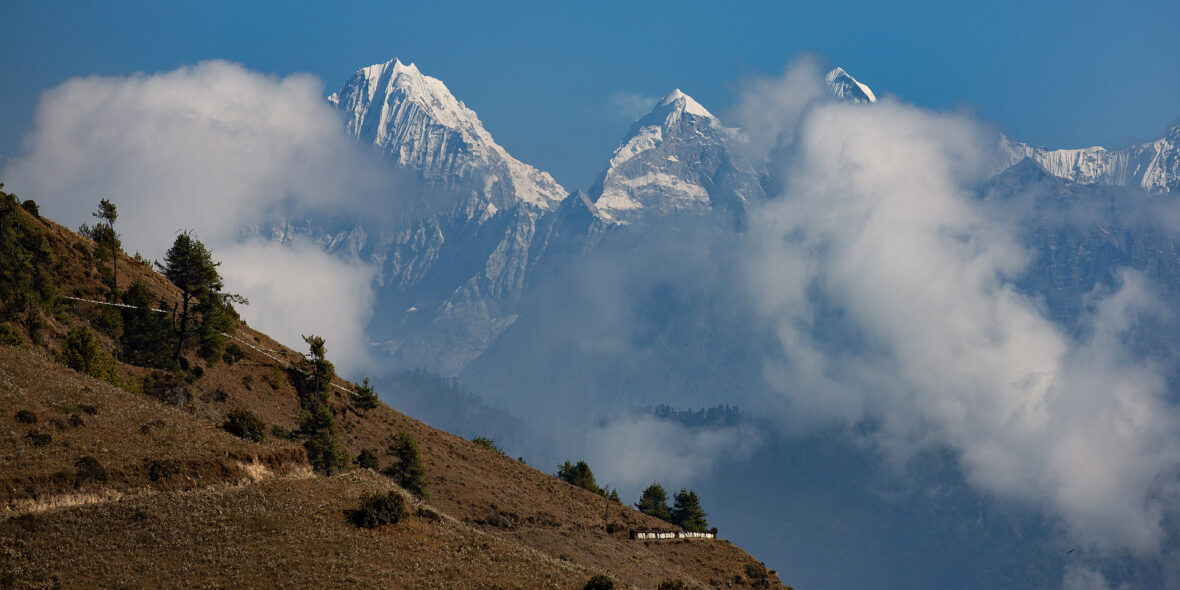
Day 04: Trek from Phaplu to Nunthala
This morning we shoulder our packs and set of on our first day of trekking! We start out with a gradual up, contouring the hills, before a nice little heart-starter up the steps to Ringmo.
After lunch, we start our downhill trek to Nunthala a large pleasant village. The trek down is stunning, with views down the valley, waterfalls, and lovely forests with lots of orchids.
Nunthala very early had its own hydro-power plant and has developed in a very pleasant way. There are tea plantations below the village, so if you never seen tea before it might be worth a look. We stay in one of the many nice guesthouses here for the night.
Walking time: Approx. 6 hours
Accommodation: Tea House
Meals included:
Breakfast, Lunch, Dinner
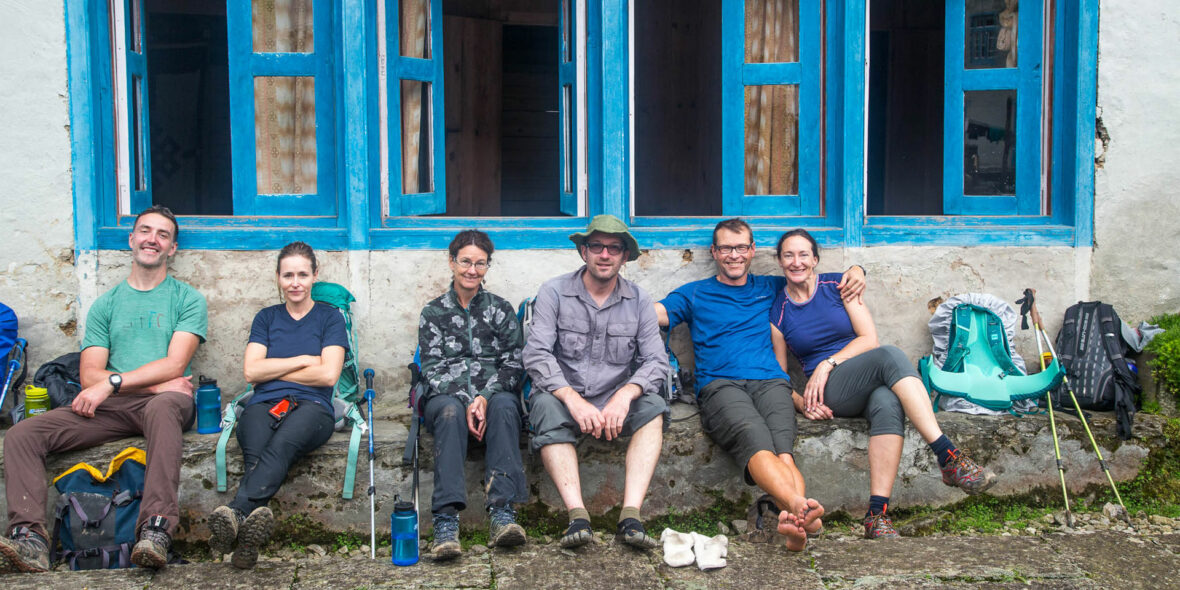
Day 05: Trek from Nunthala to Jubing [1680m]
Another largely downhill day today, we can again take it easy in the morning before we start our days trek. The first couple of hours are steeply downhill, the trail has been damaged badly over the monsoons, so take it easy. Finally, you will reach the low point of the trek, the bridge over the Dudh Kosi, this is the river that drains all of the Nepal sides of Everest, and believes it or not is has been kayaked in this section.
This is the only place on the entire trek that is low enough that you can grow rides, there are also lots of other flowers and plants like Banana down here, which you will not see on other parts of the trek.
A steep climb takes us up to Jhubing a largely Rai village where we will spend the hottest night on the trek.
Walking time: Approx. 6-7 hours
Accommodation: Tea House
Meals included:
Breakfast, Lunch, Dinner
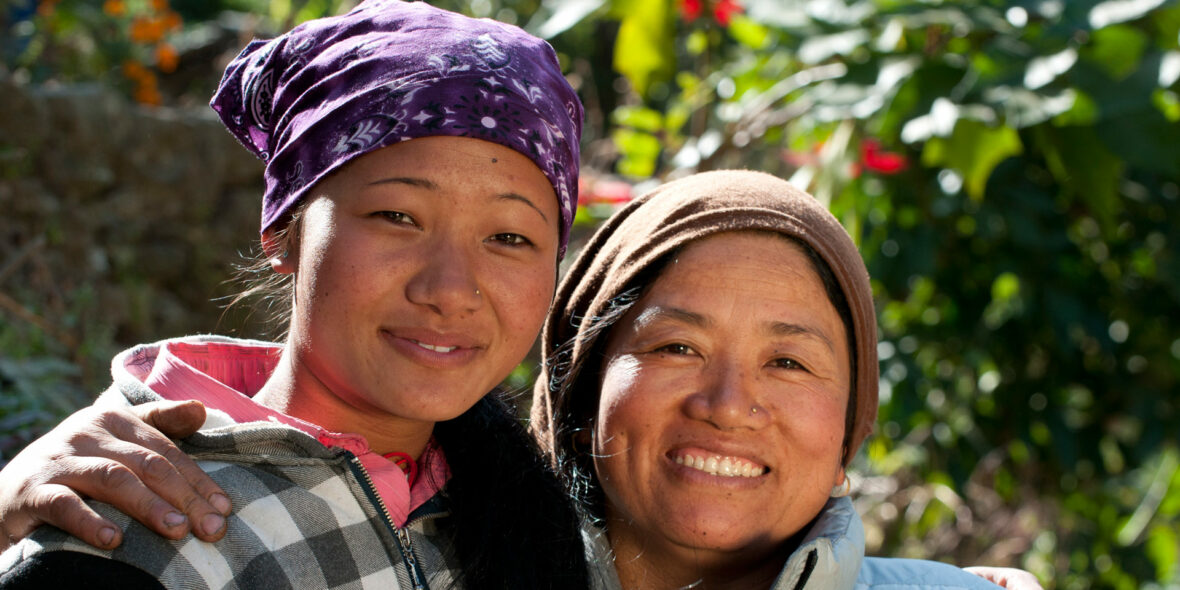
Day 06: Trek from Jhubing to Bupsa [2360m]
Today after two days of downhill, we climb all day, so get an early start as it is warm down here. The first part of the trail to Churkha is not too steep but from there we really start climbing towards a small pass above Kharikhola, here we have lunch. Take your time to wander up to the little Gompa on top of the hill; it is a stunning location with views far north towards Namche and the Khumbila.
After Lunch, we descend a little into Kharikhola a thriving village, where the Hillary-built schools have meant it has become a focal point for all the surrounding villages. At the far end of the village, we cross a small stream and then start our final climb of the day up to Bupsa.
Reaching Bupsa we stay in our favorite tea house on this entire stretch of trail, the Yellowtop, the owner makes the best Sherpa Stew (Shyakpa) known to man, do try it!
Walking time: Approx. 6 hours
Accommodation: Tea House
Meals included:
Breakfast, Lunch, Dinner

Day 07: Trek from Bupsa to Paiya [2730m]
Todays is a longer day but also a stunning day, so start early and take your time. The hill is not over yet, for the first part of today we climb and finally reach Khari, where we will stop for tea and enjoy the view. To the north Khumbila and Gashing Kang are visible and looking south you really get a sense of the middle hills.
As we continue we come to a huge rock from where we get a first view of Paiya, the walk from here is through stunning forests that were saved when charcoal making was banned in 1992. While we can see Paiya as we walk along, it is a long walk in through the valley and we finally reach Paiya in time for a late lunch. We spend the night here surrounded by forests and enjoy this last simple tea house before we get to the main Everest trail tomorrow.
Walking time: Approx. 6 hours
Accommodation: Tea House
Meals included:
Breakfast, Lunch, Dinner
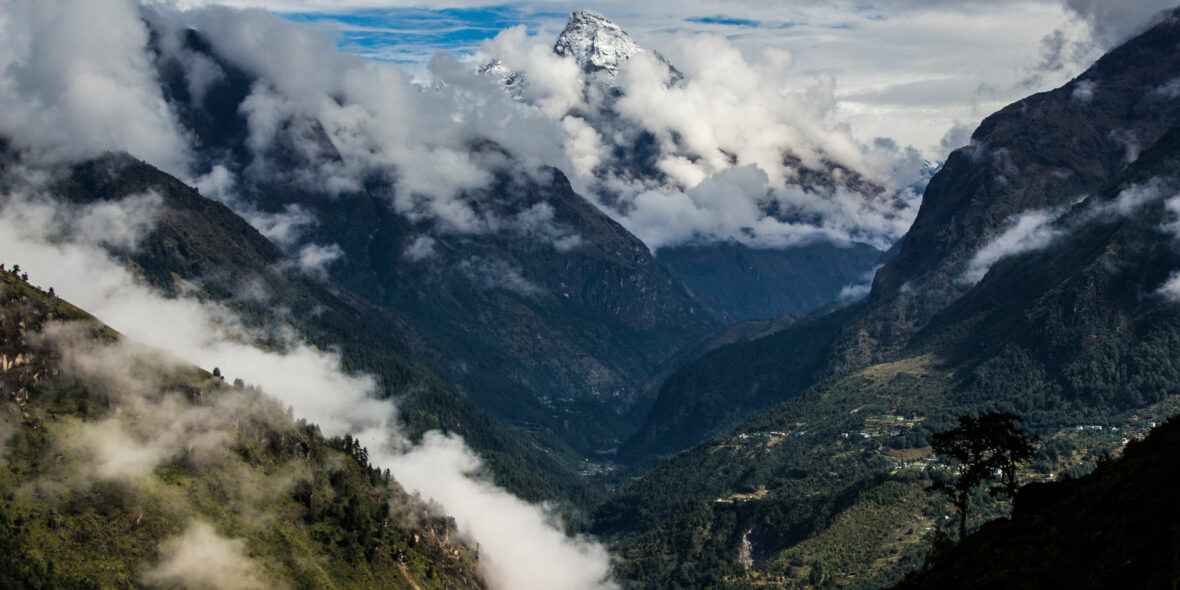
Day 08: Trek from Paiya to Chaplung
Today we start by contouring out the valley on the southern side of the hill, getting to Paiya La, we again have great views north to Khumbila and Gyachung Kang, a little bit further along we get views towards Lukla and even the runway can be spotted. A hint: don’t look for a flat spot…
We then descend steeply down to Surkhe. From here we start climbing the last little way up to the main Everest trail from Lukla. We go through Mushe and Chourikharkha before reaching the trail junction at Chaplung, where we will spend the night.
Walking time: Approx. 4-5 hours
Accommodation: Tea House
Meals included:
Breakfast, Lunch, Dinner
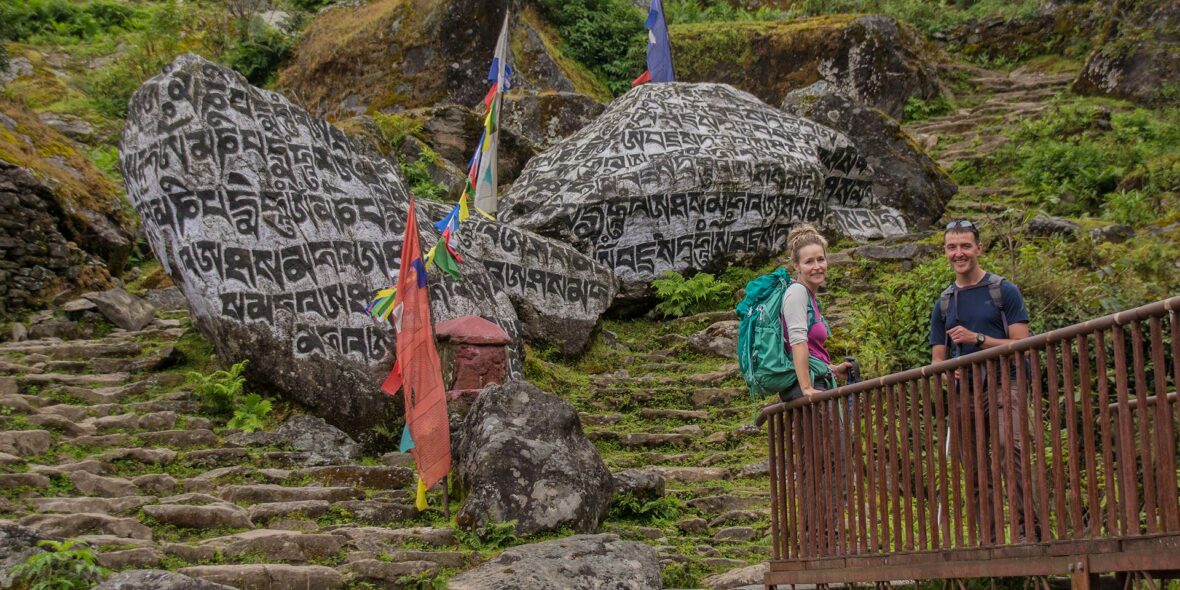
Day 09: Trek from Chaplung to Monjo [2835m]
We are now on the main trail and you will see trekkers who are straight off the plane from Kathmandu. We head up the Dudh Kosi Valley on a well-marked trail. Time permitting, we explore the two traditional villages of Sano Gumela and Thulo Gumela. We can also have a special visit to the little monastery which is home to 12-15 monks of the Gelugpa sect and is a center of high Buddhist learning.
From Phakding, you cross and re-cross the Dudh Kosi on high suspension bridges. Beyond Monjo is the entrance to the Sagarmatha National Park which was set up in order to protect and preserve this fragile mountain environment. Here we spend our night in a much bigger tea house than we have been used to earlier in the trek.
Walking time: Approx. 6 hours
Accommodation: Tea House
Meals included:
Breakfast, Lunch, Dinner
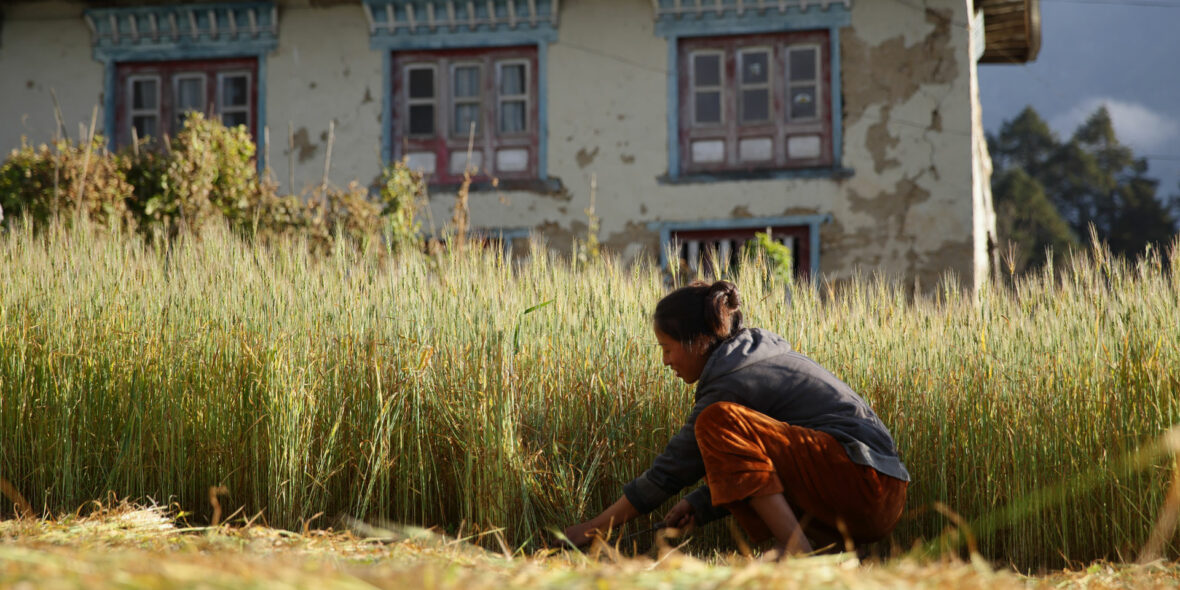
Day 10: Trek from Monjo to Namche Bazaar [3450m]
You then ascend steeply to Namche Bazaar on steps, which will be the first big climb of the trek. Just take it easy and enjoy the views along the way as there is plenty of time to get to our destination. Along the way, if the weather is clear, you can catch your first glimpse of Mt Everest in the distance.
Namche is the main trading village in the Khumbu and has a busy Saturday market – a meeting place for the Hindu traders from the lowlands and the Tibetan yak caravans that have crossed the glaciated Nangpa La. On any day of the week, this is a big, bustling trading town, packed with locals and trekkers alike!
Walking time: Approx. 5 hours
Accommodation: Tea House
Meals included:
Breakfast, Lunch, Dinner
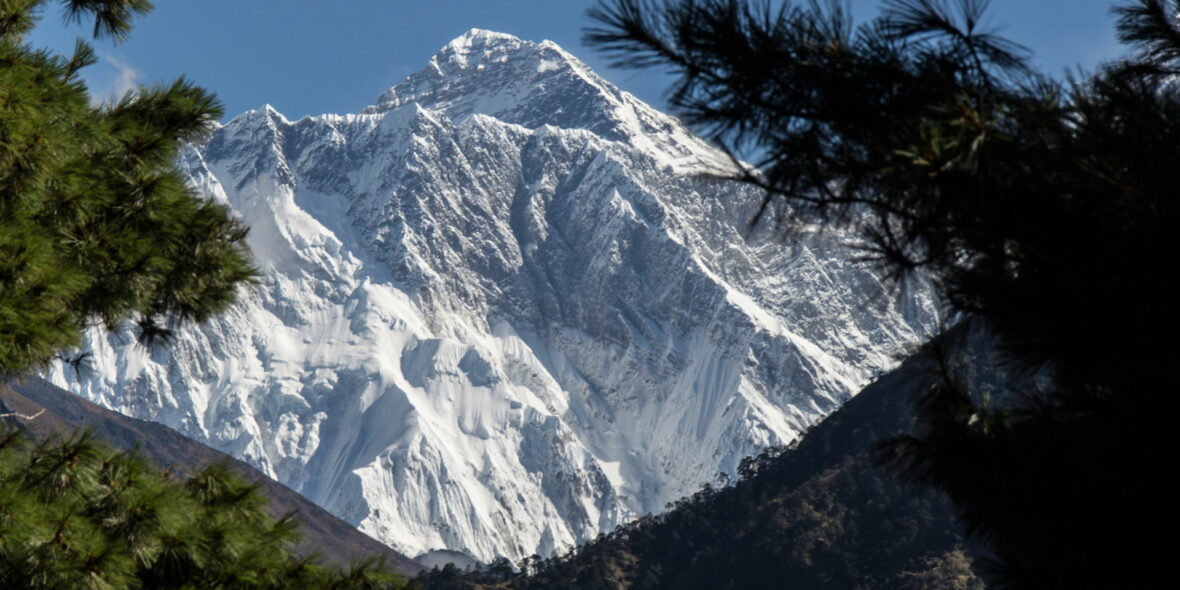
Day 11: Rest day in Namche Bazaar
Namche is tucked away between two ridges amidst the giant peaks of the Khumbu and has an abundance of lodges, tea shops and souvenir shops as well as a magnificent outlook. It is an ideal place to spend a rest day, acclimatizing to the new altitude before heading further up into the mountains.
There are a number of great acclimatization day hikes to choose from:
- Visit Everest View Hotel (2-3 hours): A one-hour walk up to the Everest View Hotel above Namche for the sunset view of Ama Dablam, Nuptse, Lhotse, and Everest. There are also good views from the National Park Centre and Museum just above the town. If you’re an early bird, a great place to go for sunrise and breakfast.
- On your way back from the Everest View, do make sure to stop in at Sagarmatha Next. The mountain gallery and community movement promotes a deeper understanding of the Khumbu region and its people to inspire a positive impact. On your way back through Namche at the end of our trek you may like to get involved with the Carry Me Back initiative, a crowdsourced waste removal system.
- Visit Khumjung and Khunde (3-4 hours): If you continue past Everest View Hotel, you descend into the village of Khumjung where you can visit the Khunde Hospital which was set up by Sir Edmund Hillary and one of the Hillary schools at Khumjung.
- Day hike to Thame (6-7 hours): If you’re fast on the trail, can also be combined with Thame (below). Thame is a beautiful old village with snaking rock walls, yak paddocks, and gorgeous, traditional slate-roofed Sherpa houses. Thame Gompa, perched up to the north of the village, is one of the oldest in the Khumbu, so it’s well worthwhile to take the afternoon to climb to the Gompa and wander around this old, walled village. In Thame, we can also see the Advanced Mountaineering Training School and their hydropower station.
- Rest for the day and explore Namche: Depending on energy levels, you can of course use this day to rest and just enjoy being in Namche.
Walking time: Approx. 1-5 hours (depending on which day hike you choose)
Accommodation: Tea House
Meals included:
Breakfast, Lunch, Dinner
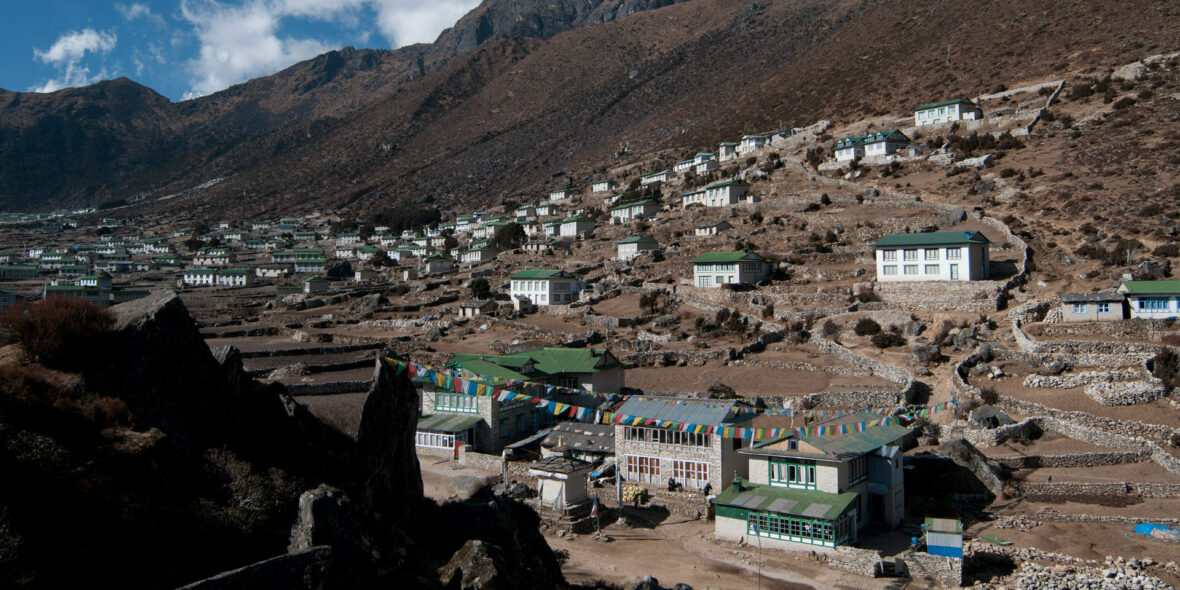
Day 12: Trek from Namche Bazaar to Tengboche [3846m]
From Namche, the trail contours around the side of the valley, high above the Dudh Kosi. Now we get our first really good views of the great peaks of the Khumbu including Mt Everest, Lhotse, Nuptse and Ama Dablam. Passing by several villages and numerous tea shops, we descend steeply to a bridge over the river at Phunki Tenga.
The village is an excellent lunch spot, and here we can rest before making the steep climb to Tengboche. Although tiring, the hike up the zigzag path has numerous distractions, with rhododendron bushes, beautiful birds and superb mountain scenery.
Tengboche is famous for its legendary monastery, the largest in the Khumbu. You stay at a teahouse near the monastery with Everest, Lhotse and Ama Dablam in full view (weather permitting).
Walking time: Approx. 4-5 hours
Accommodation: Tea House
Meals included:
Breakfast, Lunch, Dinner
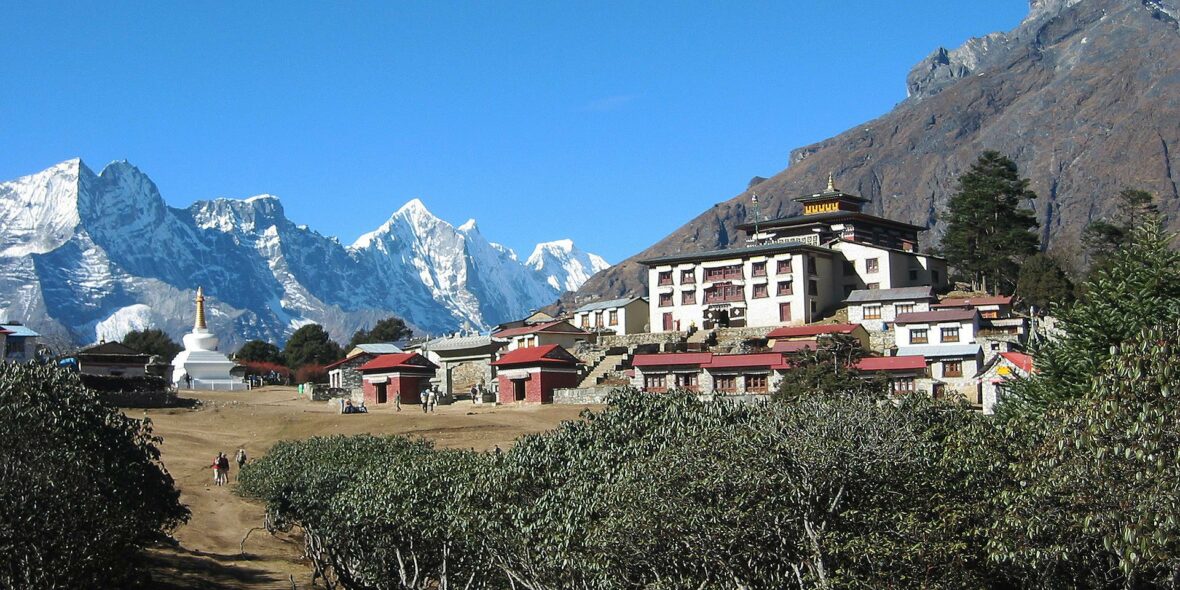
Day 13: Trek from Tengboche to Dingboche [4300m]
We descend steeply through Rhododendron forest, cross the Imja Khola and climb steadily to the village of Pangboche.
This is directly opposite Ama Dablam (6,856 m), and has exceptional views of the mountain, with the gompa, mani walls, and scattered pine trees in the foreground. Old Pangboche’s gompa is the oldest monastery in the Khumbu, founded in 1667 and housing relics said to be the skull and hand of a yeti. A further two to three hours walking brings us to Dingboche.
Walking time: Approx. 5-6 hours
Accommodation: Tea House
Meals included:
Breakfast, Lunch, Dinner

Day 14: Acclimatisation day in Dingboche
Today is a good chance to take your body a bit higher during the day and sleep back down at Dingboche in the evening. Some great hikes include exploring upper Dingboche, which has a more traditional feel than the lower part of town, taken up with the trekking lodges that we rely on up here. We can also head up onto the ridgeline to a peak called Dolma Ri, topped with prayer flags and said to be the home of eagles. For a smaller excursion there is the chance to visit an old Buddhist hermitage called Nangar Dzong. However, if you are tired, just take it easy and rest – listen to your body!
Accommodation: Tea House
Meals included:
Breakfast, Lunch, Dinner

Day 15: Trek from Dingboche to Lobuche [4930m]
We continue up the wide valley beneath the impressive peaks of Cholatse and Tawache on the left. We then turn right and climb more steeply towards the foot of the Khumbu Glacier. At the top of this climb, there are many stone cairns, built as memorials to the many Sherpas who have died while climbing Mt. Everest. Our path then climbs gently along the glacier, to eventually reach the cluster of houses at Lobuche.
This is a cold place but has an awesome view of Nuptse, particularly when lit by a full moon.
Walking time: Approx. 8-9 hours
Accommodation: Tea House
Meals included:
Breakfast, Lunch, Dinner
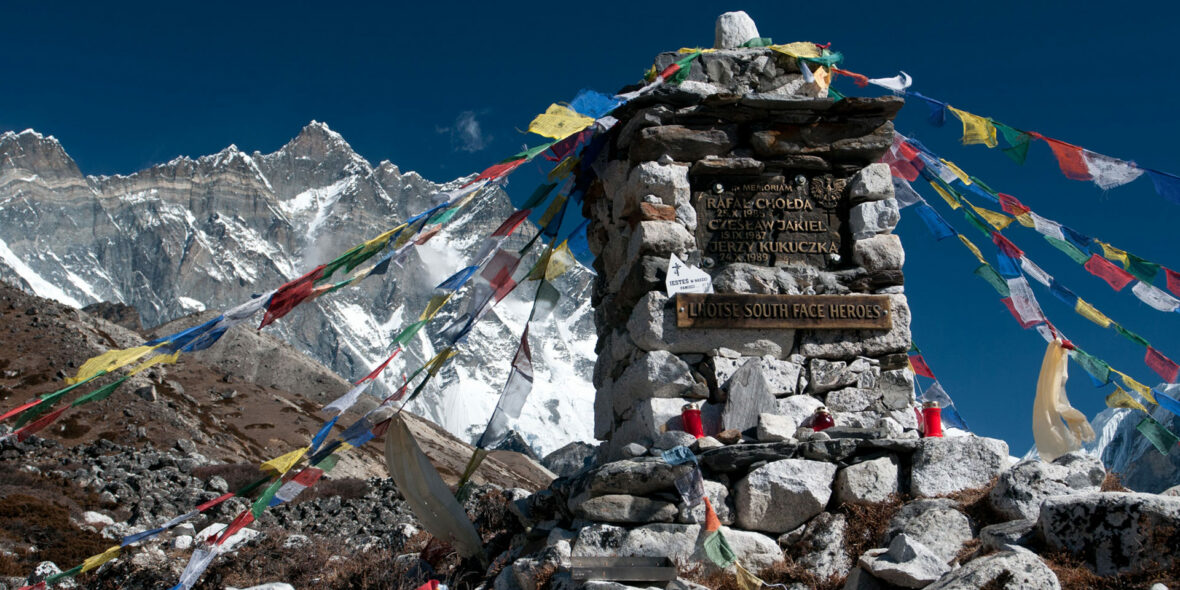
Day 16: Trek from Lobuche to Gorak Shep, Visit Everest Base Camp [5357m]
Today has a real expedition feel to it and sees us leaving Lobuche at dawn. The sun soon reaches the summits of the Himalayan peaks and slowly lights up the valley’s bottom. We traverse the Khumbu Glacier, climbing towards Gorak Shep, whose name means ‘Graveyard of Crows’, the site for a couple of very basic lodges set amongst breathtaking mountain scenery. We continue at a slow but steady pace on our bid to reach Base Camp along the Khumbu Glacier, on a long and tiring day at altitude. After a little time to take photos and relax, we make our way back down to Gorak Shep where we stay the night.
Walking time: Approx. 8-9 hours
Accommodation: Tea House
Meals included:
Breakfast, Lunch, Dinner
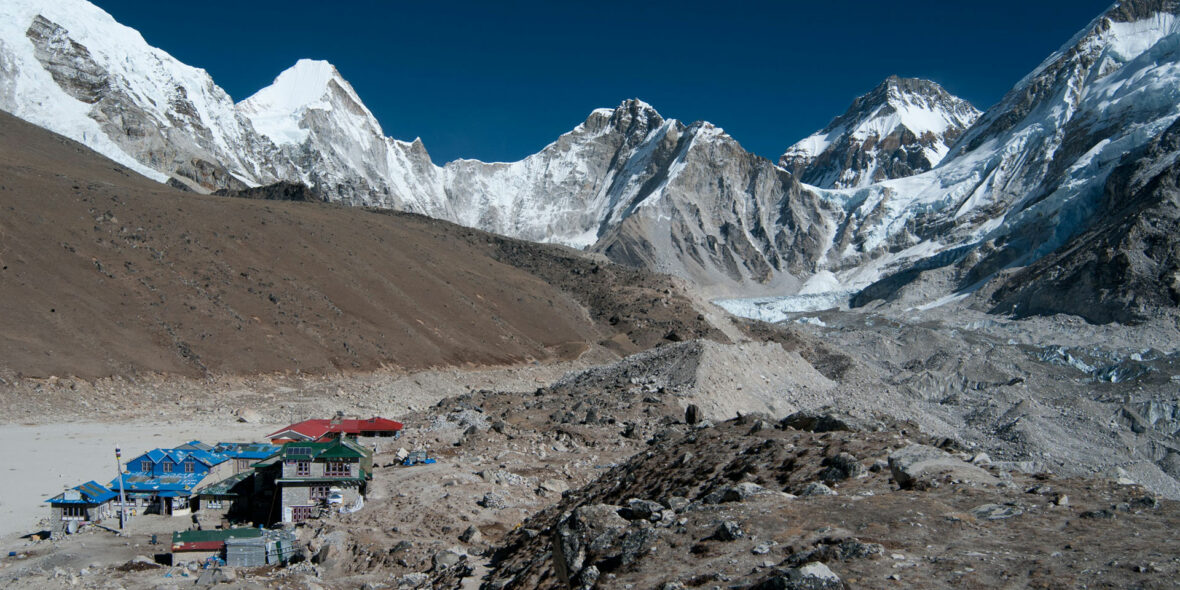
Day 17: Trek from Gorak Shep to Pheriche, Climb Kala Pattar [5554m]
Today, for those that are in good shape it is a slow steady climb to the summit of Kala Pattar, a tough trek but a real achievement that is rewarded with spectacular views of the Khumbu Glacier below and the highest mountain in the world. We then descend to Periche to complete a long but unforgettable day. Where a trek to Kala Pattar is not possible we descend directly to Periche.
Walking time: Approx. 7-8 hours
Accommodation: Tea House
Meals included:
Breakfast, Lunch, Dinner
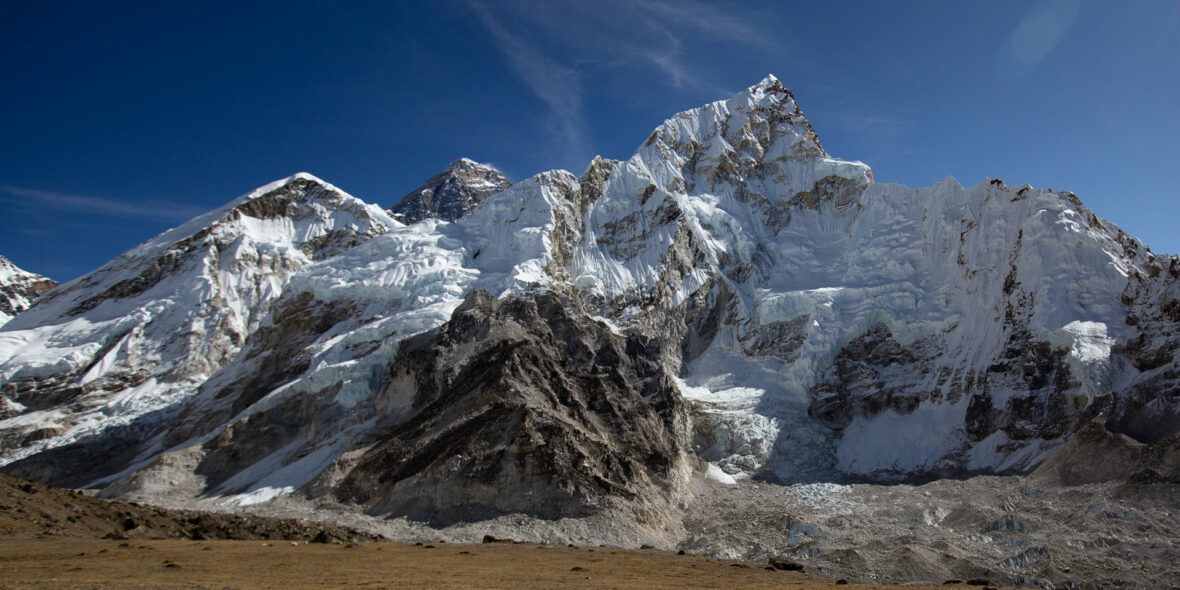
Day 18: Trek from Pheriche to Tengboche
This morning we head on down to the lovely twin villages of Pangboche. New Pangboche is where we’ll stay and Old Pangboche is home to the oldest monastery in the Khumbu, founded in 1667, which houses relics said to be the skull and hand of a yeti.
We continue to follow the river and, after crossing it, climb back up through birch and rhododendron forest to Tengboche. Kwangde, Tawache, Everest, Nuptse, Lhotse, Ama Dablam, Kantega and Thamserku are just a few of the Himalayan giants to be seen.
Walking time: Approx. 6-7 hours
Accommodation: Tea House
Meals included:
Breakfast, Lunch, Dinner
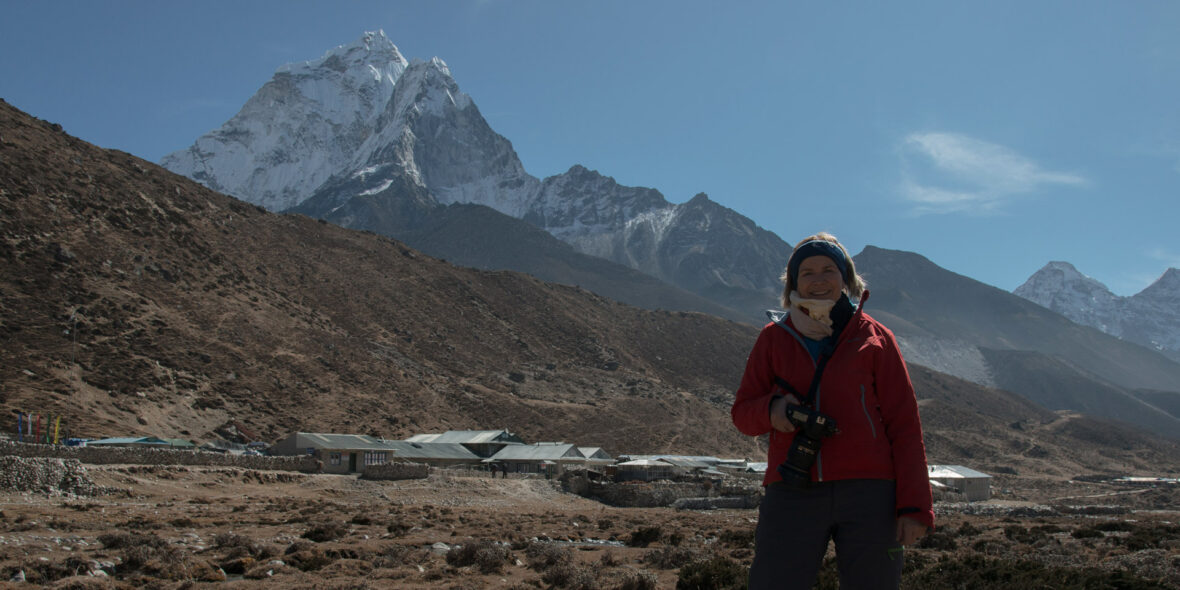
Day 19: Trek from Tengboche to Namche [3450m]
We continue to follow the river and, after crossing it, climb back up through the birch and rhododendron forest to Tengboche and its famous monastery. There are magnificent views from here and Kwangde, Tawache, Everest, Nuptse, Lhotse, Ama Dablam, Kantega and Thamserku are just a few of the Himalayan giants which can be seen. From Tengboche, we descend to the bridge over the Dudh Kosi at Phunki Tenga, where there are water-driven prayer wheels, before making our way back to Namche.
Walking time: Approx. 5-6 hours
Accommodation: Tea House
Meals included:
Breakfast, Lunch, Dinner
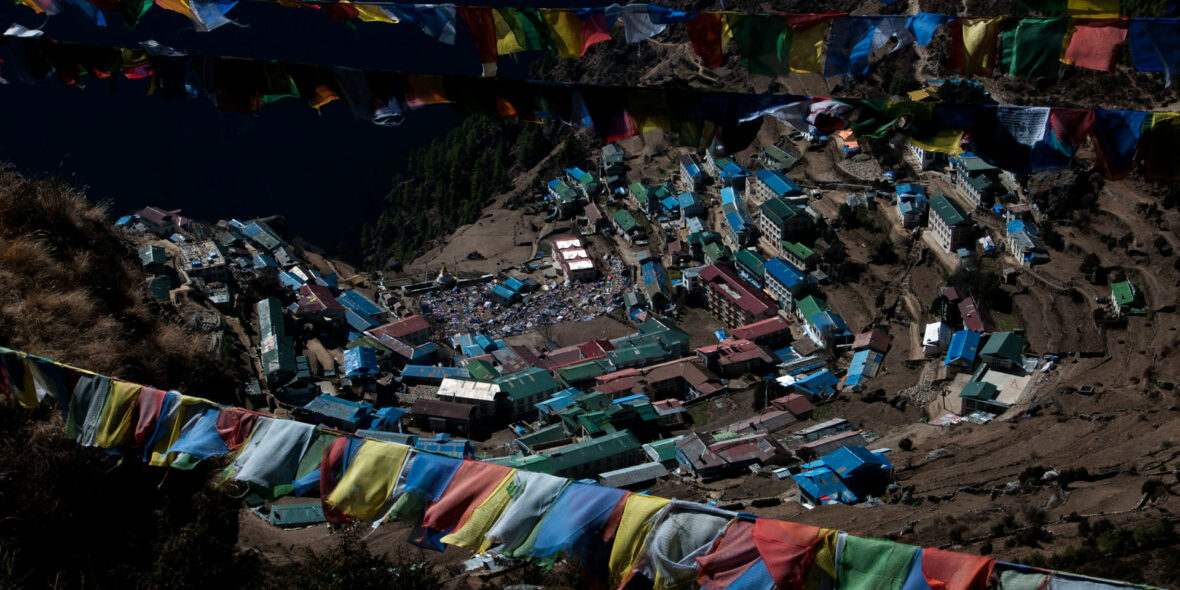
Day 20: Trek from Namche Bazaar to Lukla [2800m]
Our final day’s trekking follows the Dudh Kosi back down to Lukla. This last evening in the mountains is the ideal opportunity for a farewell party with the sherpa guides and porters, where we can sample some chang, try Sherpa dancing, and look back on a memorable trekking experience.
Walking time: Approx 6-7 hours
Accommodation: Tea House
Meals included:
Breakfast, Lunch, Dinner
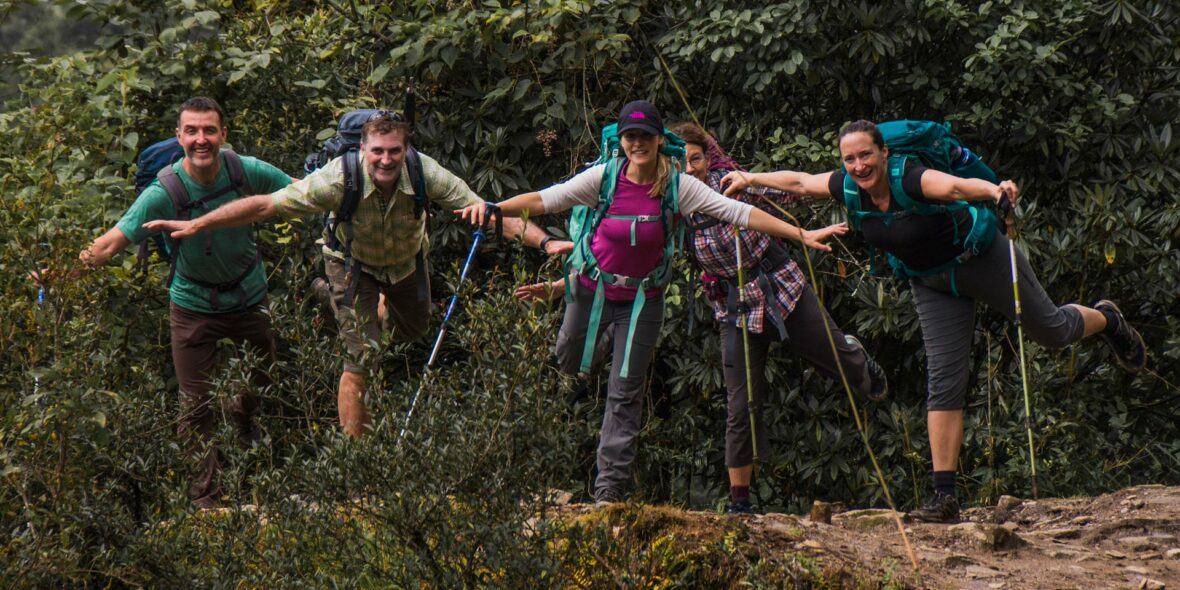
Day 21: Fly from Lukla to Kathmandu
After an early breakfast, you head to the airstrip with your guide for the return flight to Kathmandu. Flights out of Lukla usually depart early in the morning so you should arrive in Kathmandu with plenty of time for further sightseeing, shopping, getting a massage, or taking in the life of the town from a street-side cafe.
Upon arrival at the airport, you’ll be transferred to your hotel in Kathmandu to check-in and then the rest of the day is free.
Accommodation: None
Meals included:
Breakfast
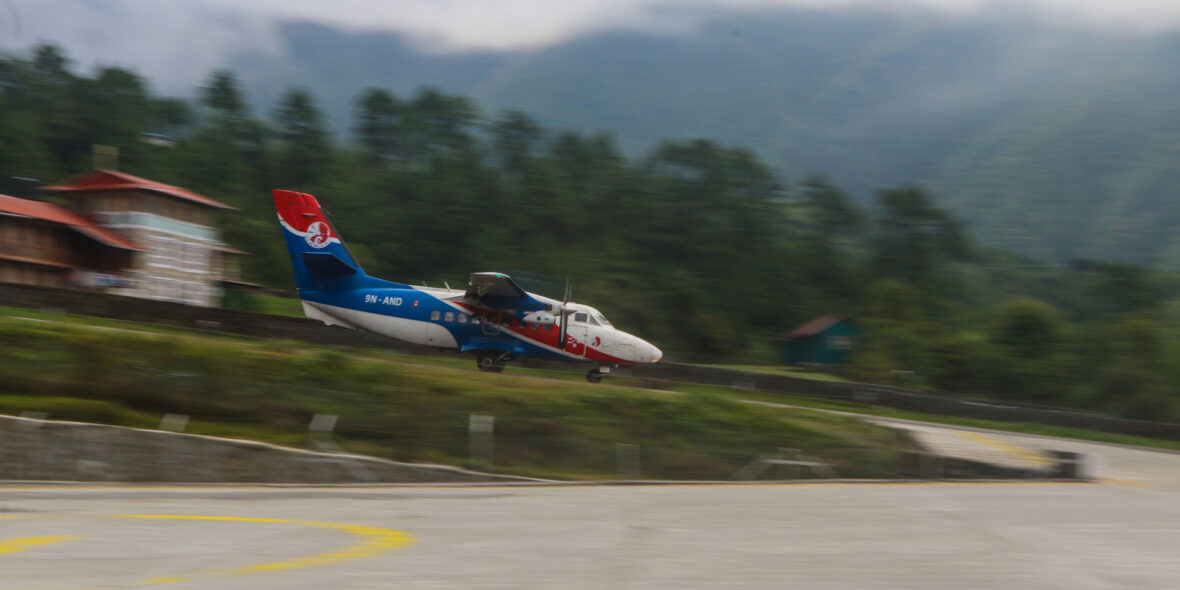
Included In Price
- Tea house accommodation while on trek
- Meals as per the itinerary (all meals on trek, with filtered drinking water)
- Transportation as per the detailed itinerary (includes the flights to and from Kathmandu for you and your guide, including transfers and airport taxes)
- Your trekking guide, sherpas and porters, with all their transport, equipment, insurance, meals and accommodation
- A first aid kit with basic supplies appropriate for the group size and trek route – if you require or are taking specific medications it is critical that you discuss this with us prior to your trip departure
- Trekking permits and registration fees
Note: The local tea houses are basic but clean and they do not often have attached bathrooms or hot showers. The price is based on twin share and does not include any extra charge that lodge owners may levy for single rooms, attached bathrooms or hot showers (if these facilities are available) or for battery charging. We can’t know in advance what they may charge for such things in the different lodges along the way, so we prefer to leave this cost out, rather than pass along an estimated charge to you.
The meal inclusions on the trek are breakfast (one set breakfast and tea or coffee), lunch (one main meal and tea or coffee) and dinner (soup, main and dessert with tea or coffee)
Not Included In Price
- Services and activities not mentioned in the detailed itinerary
- Any gear or equipment that you may need to rent/buy – please ask us if you would like any advice about gear to bring/buy/rent
- International flights to and from Kathmandu
- Nepal visa fees and international airport taxes
- Any excess baggage charges
- Comprehensive travel insurance that includes trip cancellation and rescue evacuation should this be required for any reason (we require this as the minimum insurance cover)
- Additional nights, optional trips and sightseeing tours outside the detailed itineraries above
Single supplement - Personal expenses (eg mineral water/soft drinks/bar bills, entrance/photography fees at monasteries, laundry, telephone calls, postage, donations, extra snacks, etc)
- Any extra charge that tea house owners may levy for single rooms, attached bathrooms, or hot showers (if these facilities are available) and charging of batteries
- Tips for your trekking crew, city guide, drivers, hotels, restaurants, etc (please ask if you would like guidance about appropriate tips)
- Costs incurred due to unforeseen events (eg caused by natural disasters, adverse road conditions/flight delays, labor strikes, fuel shortages, extreme exchange rate changes, etc)


